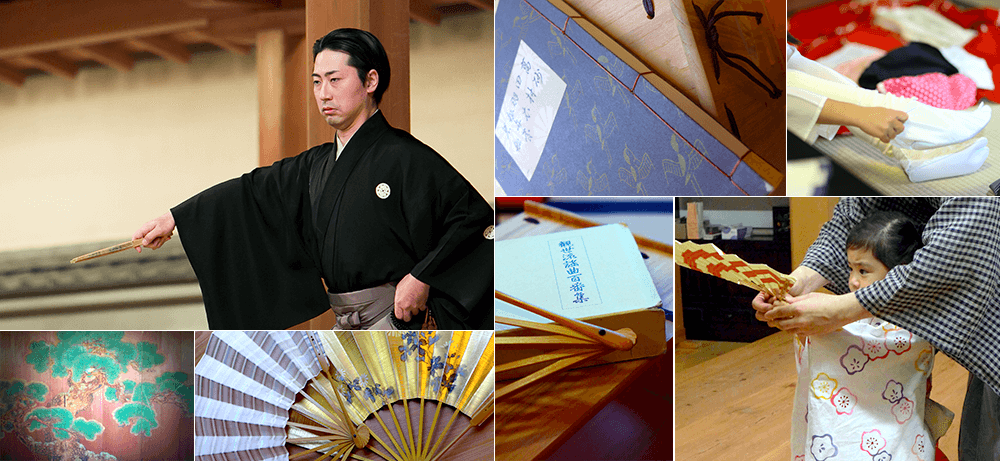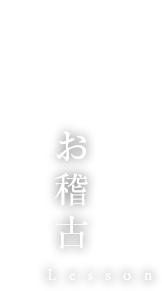お稽古Lesson
「仕舞」、「謡」のお稽古を始めてみませんか。Would you like to try a lesson in “Shimai” and “Utai”?

「仕舞」とは、能の一場面を、面・衣装を用いずに謡のみで舞うもの、「謡」とは能の伴奏にあたる歌謡の事を言います。
能は、600年続く日本の伝統芸能であり、その精神性、美意識は舞台上から人間の内面に踏み込み、観る人の心を揺さぶる力を持つものです。また、日本の古典文学や和歌を題材にした演目も多く、謡の中にはとても美しい日本語がちりばめられています。そこには幾重にもなる意味や心象が織り込まれ、深淵なる世界が広がっています。その為、今日まで美術・工芸・文学に留まらず、多くの日本文化に影響を与えてきました。
能は芸術的要素、文学的要素、美術的要素が過分に含まれた総合芸術なのです。「仕舞」、「謡」を学ぶ事によって、能に対する理解を深めてみませんか。日本の伝統文化をもっと知りたい、日本人らしい所作を身につけ、着物での立居振舞いを美しくしたいという方にもお勧めです。興味のある方は、お稽古の見学も出来ますので、電話かメールでお問い合わせください。
お稽古は京都市左京区浄土寺にある「松響閣」という稽古舞台にて行われています。京都紫野、亀岡、岡山、東京三田、鳥取でも出稽古が行われておりますので、お近くにお住まいで興味のある方はそちらの方にも足を運んでみてください。
“Shimai” means performing one of the scenes without masks or costumes, but with “Utai”, and “Utai” means the singing part of the music.
Noh is the Japanese traditional art that originated 600 years ago, and its spirituality and beauty will get to the core of people’s hearts, inspiring the audience. In addition, there are many works featuring Japanese classical literature or “Waka” (a 31-syllable Japanese poem), and various beautiful Japanese words are included in “Utai.” The language consists of many layers of meaning and the character’s minds in “Utai” show the audience a profound world. Therefore, Noh has influenced not only fine arts, craft arts, and literatures, but also numerous Japanese cultures.
Noh is the fusion of arts that sufficiently includes the elements of arts, literature, and fine arts. How about deepening your understanding of Noh by learning “Shimai” and “Utai”? This lesson is also recommended for those who want to learn Japanese traditional art, Japanese mannerisms, or improve the demeanor in wearing Kimono. If you are interested, you can observe a lesson, so please contact us via phone or email.
The lesson will be held on a stage for practice called “Shokyokaku” inside Jyodo-ji Temple in the Sakyo ward of Kyoto city. The lesson is also held in Murasakakino, Kyoto City, Kameoka City, Okayama Prefecture, Mita Tokyo or Tottori Prefecture, so please visit the studios if you live nearby and are interested.





